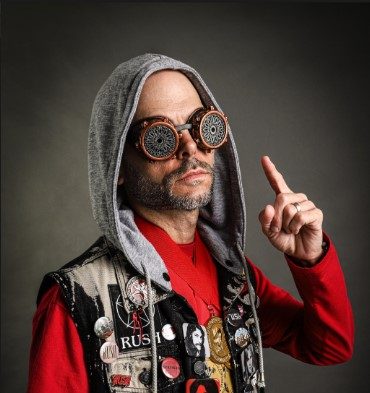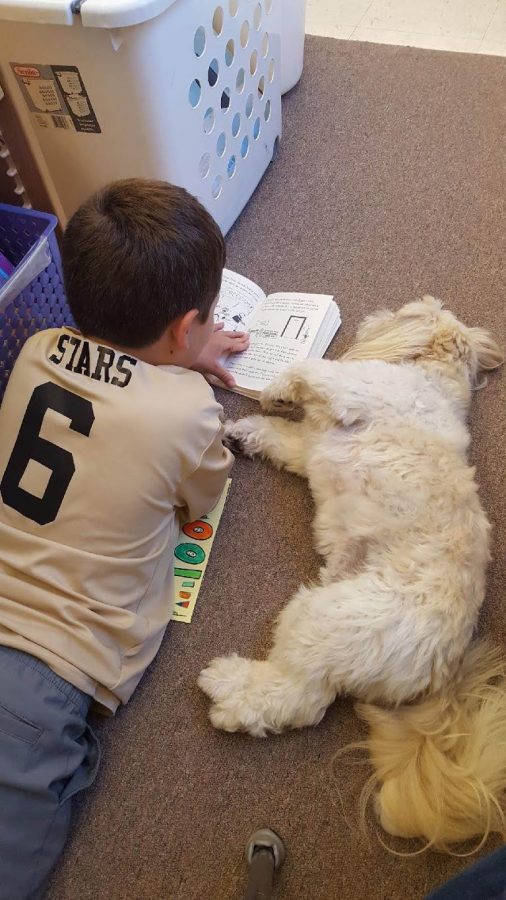Therapy Dogs Impact Every Generation
Boo just received his 5 1:2 year award for his work as a therapy dog.
May 28, 2018
Anxiety and depression have become two major factors in many teenagers’ daily lives. School, work, after-school activities, and the recent climate of today’s society result in overwhelming situations for not just students at Hingham High School, but for many of all ages.
Therapy dogs have become a new way to help people bring their stress levels down and find a sense of comfort in high-pressure situations. These dogs are seen in settings such as high schools, college campuses, child development centers, hospitals, elderly housing centers, and nursing homes. They are all serving the same purpose: to provide unconditional love.
Fromtlinners in the field of psychology show that the use of therapy dogs after traumatic events can lower symptoms of depression and anxiety in patients. This method is also used in hospitals after patients undergo operations and treatments.
This is because therapy dogs distract the patient, resulting in reduced pain levels. In addition, therapy dogs have a positive impact on children and young adults in developing empathy and social skills as well as increasing comfort with groups or individuals.
Freshman Abbey Foley explained a recent experience she had with a therapy dog. She described, “I felt so much happier and less stressed because they get me off the topic that my mind is constantly thinking about.”
To further understand the process of training a therapy dog, Mrs. Tonina Burnham shared her experiences as a therapy dog owner. Her Shih Tzu Boo has been a therapy dog for five and a half years with the organization Dog B.O.N.E.S in Scituate, Massachusetts.
“What is it about a dog?” Burnham spoke. “They really put you in the moment. You are not worried about the past or about the future, just you at that moment, with the dog.”
The organization has also impacted the lives of many young people. Mrs. Burnham shared a story of the organization’s time spent at Boston University with students preparing for exams, saying, “I went to BU, and I thought, ‘what college student is going to turn up to pet a dog?’ And there was a line of people out the door.”
Boo also visits Active Day, which is a weekly event offering activities for elderly and/or disabled individuals.
“When Boo walks in there, he is a celebrity. They are all like, ‘Boo’s here!’ They love it and they love him,” Mrs. Burnham said.
Loneliness can often be the worst part of an older adult’s life. Therapy dogs provide a sense of companionship and joy in the lives of senior citizens. Burnham describes it as “a little moment of happiness in their day.”
In addition to impacting the lives of many senior citizens, Boo also serves as a reading dog at the Hingham Public Library. Here, Boo listens to children as they read to him.
“The idea behind the reading dog is that if you are a young reader or a struggling reader, you are likely a self-conscious reader. Reading to a dog is completely nonjudgemental, so there is not a teacher or an adult that is evaluating their reading, [Boo] is just hanging out,” elaborated Mrs. Burnham.
Reading dogs provide a setting where the children can relax and read. Building strategies early on with reading is a way to gain confidence, resulting in a more enriching school experience.
As students grow and pressures increase due to higher expectations, more testing, and advanced academic demands, therapy dogs can provide a way to deal with the stress. Therapy dogs have the capability to lower depression rates in teenagers and provide a distraction from the stresses teenagers’ everyday lives. With the help of Boo and similar therapy dogs around the country, the battle against mental health disorders can be won.


































